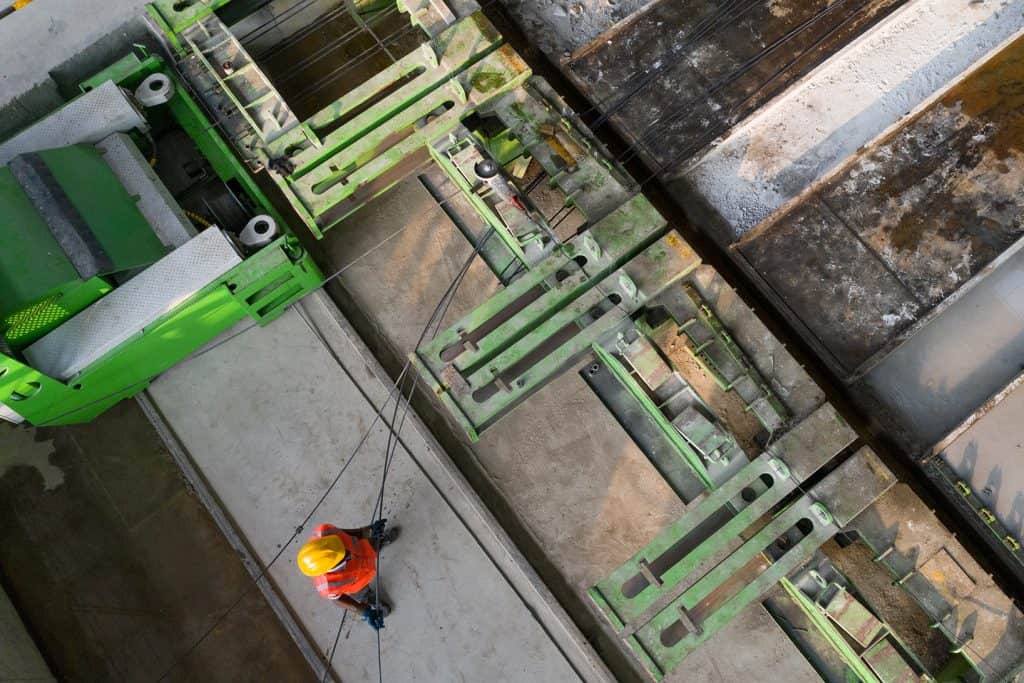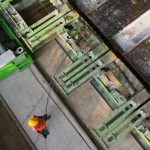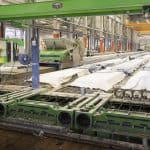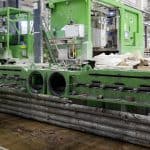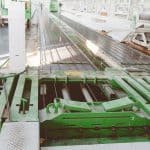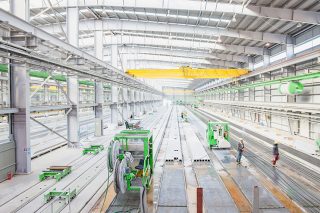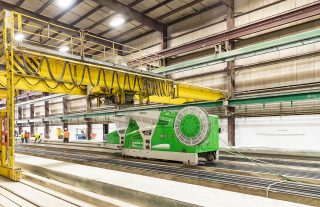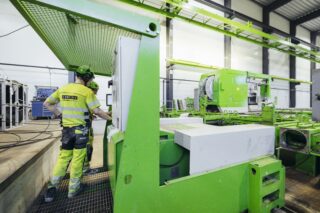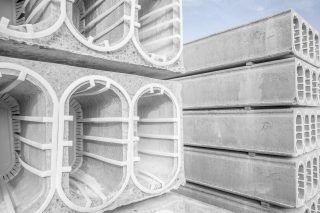Stressing abutment E9
The Elematic Stressing Abutment E9 is designed to hold the stressing strands of hollow core slabs during prestressed precast concrete production. The Stressing Abutment E9 includes a pair of abutments, one active abutment for bundle stressing, and a passive abutment.
Stressing abutment E9-300
| Capacity total | 300 t |
|---|---|
| Capacity of bundle stressing beam | 200 t |
| Capacity of intermediate beam | 150 t |
| Stroke length of the stressing cylinder | 1100 mm |
The Stressing Abutment E9 is designed for multistrand (bundle stressing) but can also be used for single strand stressing. To equip a casting bed for pre-stressing, a pair of abutments is required; one for each end of the bed, the active end and the passive end.
The abutments at both ends are mounted directly in the concrete foundation of the bed. At the active end, the stressing device and the beam can take a 200-ton maximum stressing force, while the fixed intermediate beam can take a 150-ton stressing force. The total maximum stressing force the abutment can take is 300 tons.
OPERATION
Stressing takes place in one or several stages. The strands in the first pull are stressed with a stressing beam, which is then fixed with wedges if only one pull is needed. If there are a lot of strands and additional pulls are needed, the first strands are fastened to the intermediate beam with anchor grips. After this, the remaining strands are fastened to the stressing beam, the pull is conducted, and the stressing beam is fixed or the process continues with a third pull.
BUILT-IN SAFETY
Like all Elematic machinery, safety features are built in. The Stressing Abutment E9 meets the EC Machine Directive requirements. It comes with thorough, clear operator, maintenance and safety manuals in the required language.
CONSTRUCTION
Abutment construction differs at the active end and the passive end. The active abutment features a fixed frame, a mobile stressing beam, pins for fixing the hydraulic cylinder shafts and a locking plate for locking the beam after stressing.
Short time of high-level risk caused by stressing
Do you have questions? Contact us!
or
